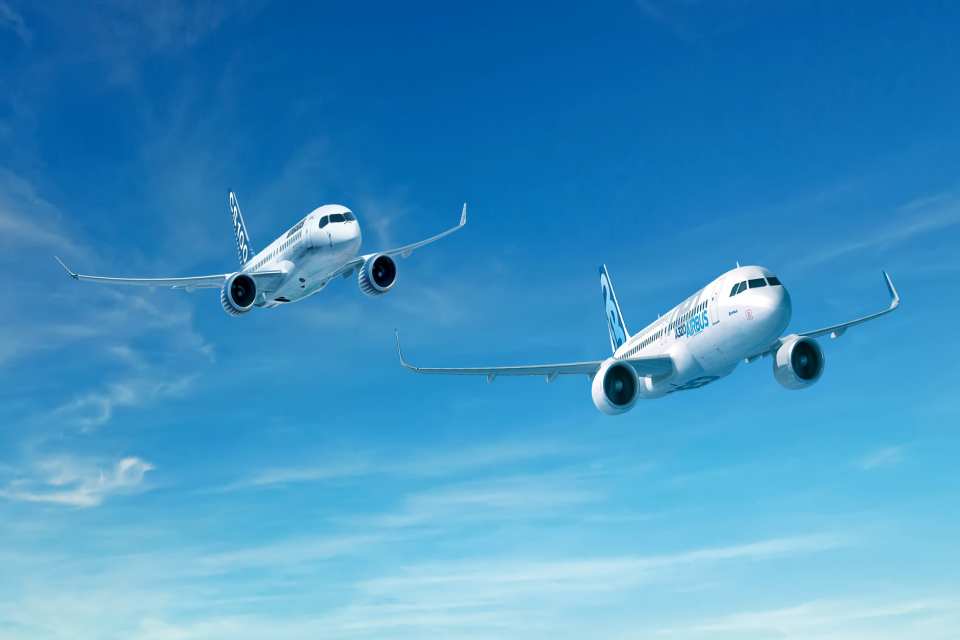Aerospace
Airbus and Bombardier Announce C Series Partnership

- Airbus to acquire majority stake in the C Series Aircraft Limited Partnership
- Partnership brings together two complementary product lines, with 100-150 seat market segment expected to represent more than 6,000 new aircraft over the next 20 years
- Combination of Airbus’ global reach and scale with Bombardier’s newest aircraft family to create significant value for customers, suppliers, employees and shareholders
- Significant C Series production costs savings anticipated by leveraging Airbus’ supply chain expertise
- Commitment to Québec: C Series Aircraft Limited Partnership headquarters and primary assembly to remain in Québec, with the support of both companies’ global supply chains
- Airbus’ global industrial footprint expands with the C Series Final Assembly Line in Canada, resulting in a positive impact on operations in Québec and across the country
- Growing market for C Series results in second Final Assembly Line in Mobile, Alabama, serving U.S. customers
Amsterdam / Montreal, 16 October 2017 – Airbus SE (EPA: AIR) and Bombardier Inc. (TSX: BBD.B) are to become partners on the C Series aircraft programme. A corresponding agreement was signed today. The agreement brings together Airbus’ global reach and scale with Bombardier’s newest, state-of-the-art jet aircraft family, positioning both partners to fully unlock the value of the C Series platform and create significant new value for customers, suppliers, employees and shareholders.
Under the agreement, Airbus will provide procurement, sales and marketing, and customer support expertise to the C Series Aircraft Limited Partnership (CSALP), the entity that manufactures and sells the C Series. At closing, Airbus will acquire a 50.01% interest in CSALP. Bombardier and Investissement Québec (IQ) will own approximately 31% and 19% respectively.
CSALP’s headquarters and primary assembly line and related functions will remain in Québec, with the support of Airbus’ global reach and scale. Airbus’ global industrial footprint will expand with the Final Assembly Line in Canada and additional C Series production at Airbus’ manufacturing site in Alabama, U.S. This strengthening of the programme and global cooperation will have positive effects on Québec and Canadian aerospace operations.
The single aisle market is a key growth driver, representing 70% of the expected global future demand for aircraft. Ranging from 100 to 150 seats, the C Series is highly complementary to Airbus’ existing single aisle aircraft portfolio, which focuses on the higher end of the single-aisle business (150-240 seats). The world class sales, marketing and support networks that Airbus brings into the venture are expected to strengthen and accelerate the C Series’ commercial momentum. Additionally, Airbus’ supply chain expertise is expected to generate significant C Series production cost savings.
Airbus is strongly committed to Canada and its aerospace sector with Canadian suppliers extending their access to Airbus’ global supply chain. This new C Series partnership is set to secure jobs in Canada for many years to come.

Aerospace
Boeing Transfers Rocket Stage to NASA, Paving Way for Human Moon Mission

Boeing has achieved a significant milestone by providing NASA with the second core stage of the Space Launch System (SLS) rocket.
This crucial component, crafted at NASA’s Michoud Assembly Facility (MAF), is set to propel the Artemis II crew into lunar orbit, marking humanity’s return to deep space after a 50-year hiatus.
The monumental Boeing-built rocket stage, the largest element of the Artemis II mission, will embark on a journey aboard the Pegasus barge, traveling 900 miles to NASA’s Kennedy Space Center.
Comparison of two legendary aircraft B777x vs B747 aircraft:Click here
Upon arrival, it will be meticulously integrated with other essential Artemis II components, including the upper stage, solid rocket boosters, and NASA’s Orion spacecraft within the iconic Vehicle Assembly Building. This intricate integration process is a vital step toward the eagerly anticipated Artemis II launch, slated for 2025.
“Boeing-built products helped land humankind on the moon in 1969, and we’re proud to continue that legacy through the Artemis generation,” remarked Dave Dutcher, vice president and program manager for Boeing’s SLS program. “Together, with NASA and our industry partners and suppliers, we are building the world’s most capable rocket and paving the way to deep space through America’s rocket factory in New Orleans.”
NASA, Lockheed Martin Reveal X-59 Quiet Supersonic Aircraft:Click here
The delivery of Core Stage 2 marks a significant achievement in the evolution of the SLS rocket. Towering over 200 feet and powered by four RS-25 engines, this core stage, coupled with two solid-fueled booster rockets, will generate a staggering 8.8 million pounds of thrust. This immense power is crucial to launching Artemis II and future missions into the vast expanse of space.
The SLS rocket stands unparalleled in its capability to transport both crew and substantial cargo to the moon and beyond in a single launch. Its extraordinary capacity will facilitate the delivery of human-rated spacecraft, habitats, and scientific missions to destinations including the moon and Mars, ushering in a new era of space exploration.
-

 Travel1 week ago
Travel1 week agoAir India to Expand US Operations with Three New Routes After a Decade
-

 Travel2 weeks ago
Travel2 weeks agoWhy We Should Avoid These Stamps in a Passport
-

 Airlines1 month ago
Airlines1 month agoInvestigations Reveal Fake Chinese Titanium in Boeing and Airbus Jets
-

 Tech4 weeks ago
Tech4 weeks agoChina’s CATL Plans 1,800-Mile Electric Plane Launch by 2027
-

 Airport3 days ago
Airport3 days agoTop 10 Largest Airports in the World by Size
-

 Aerospace4 weeks ago
Aerospace4 weeks agoChina’s Fighter Jets Turn Wings into Autonomous Drones
-

 Airlines4 days ago
Airlines4 days agoAir India Rolls Out A350s for Delhi-New York JFK and Newark Routes
-

 Defence3 weeks ago
Defence3 weeks agoBoeing Enhances Chinook with New Engines and Block II Upgrades at $96 Million







